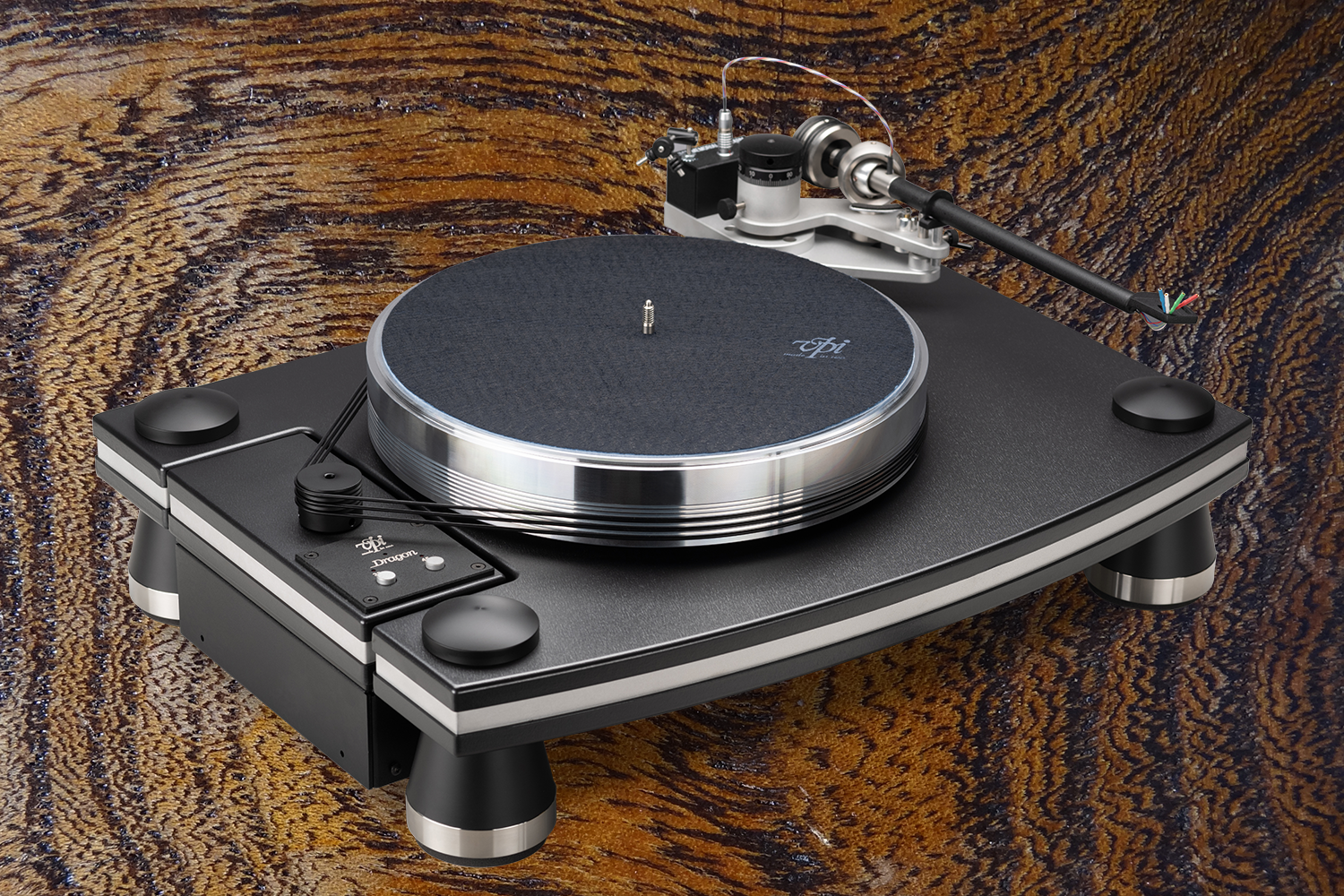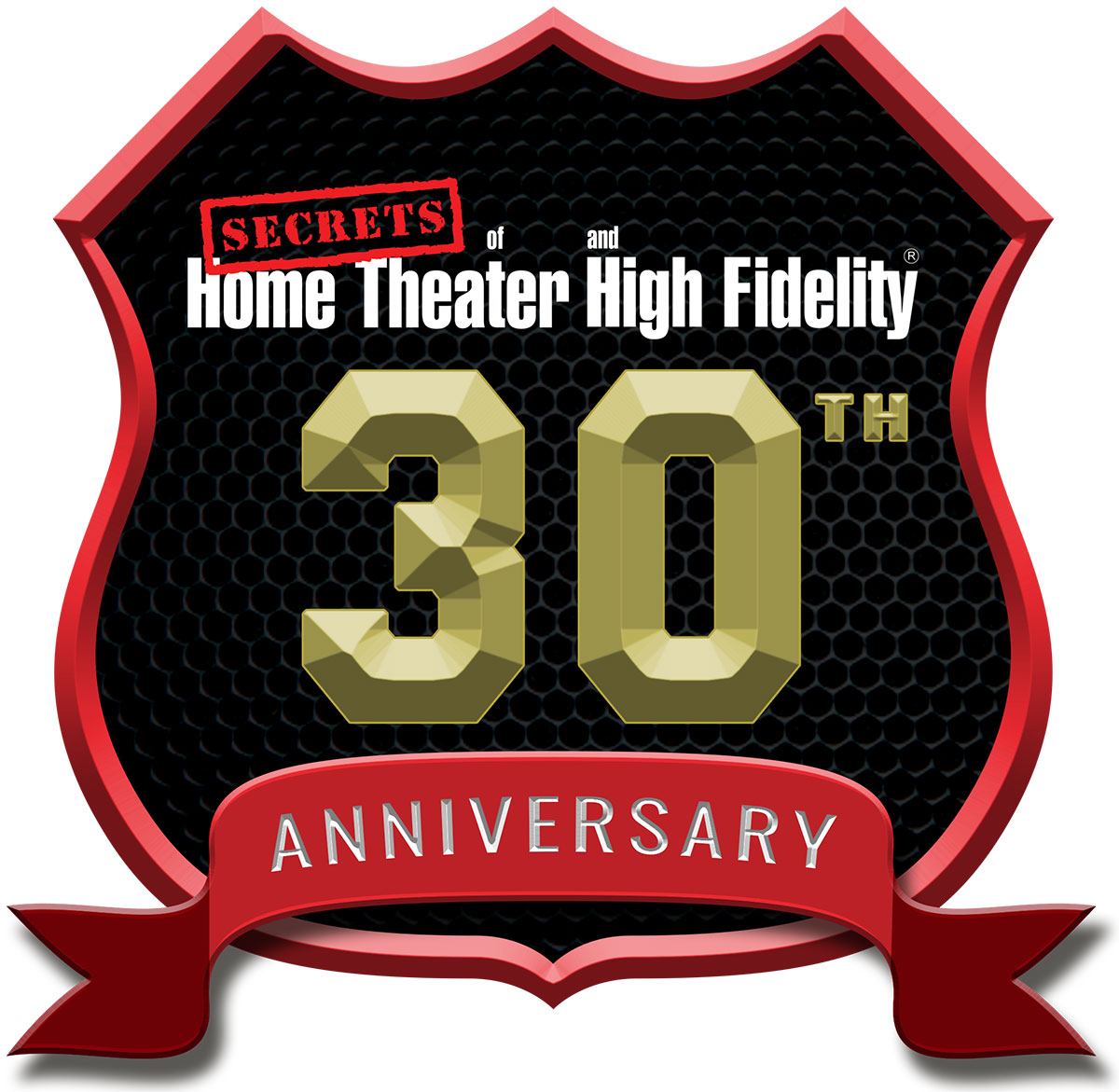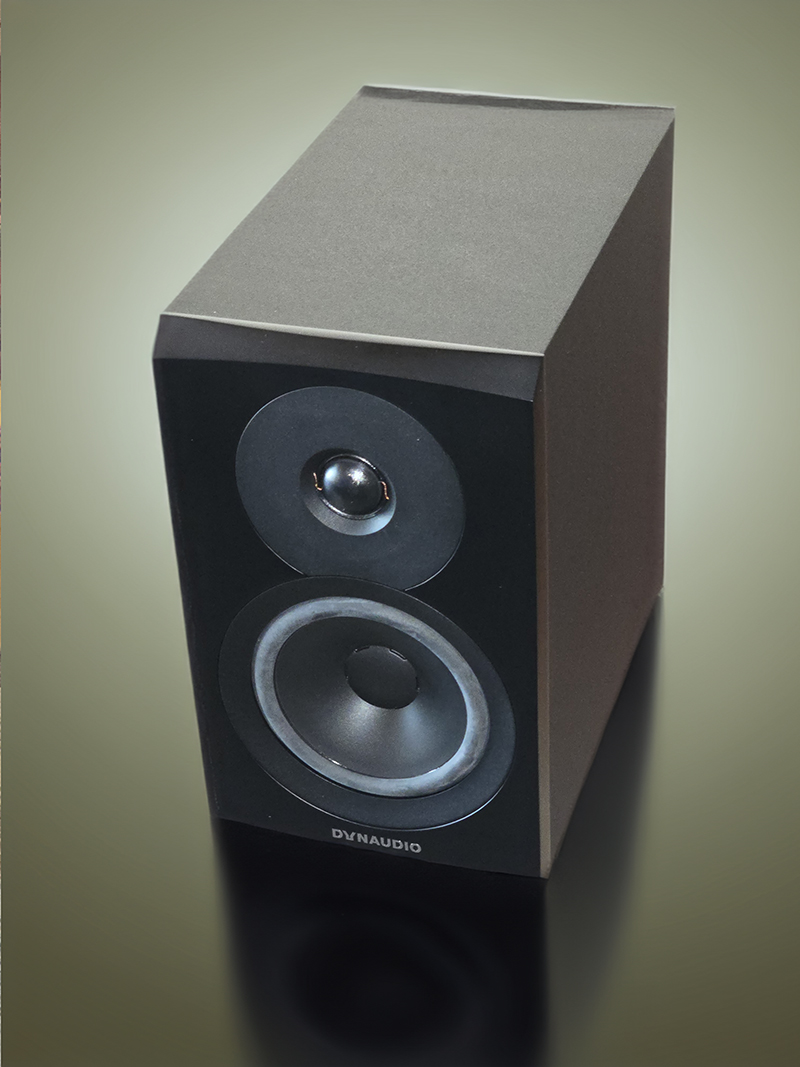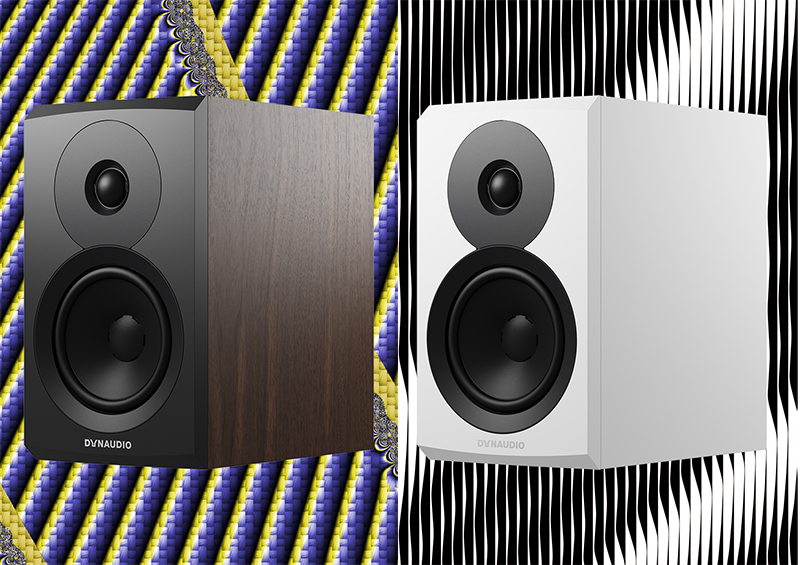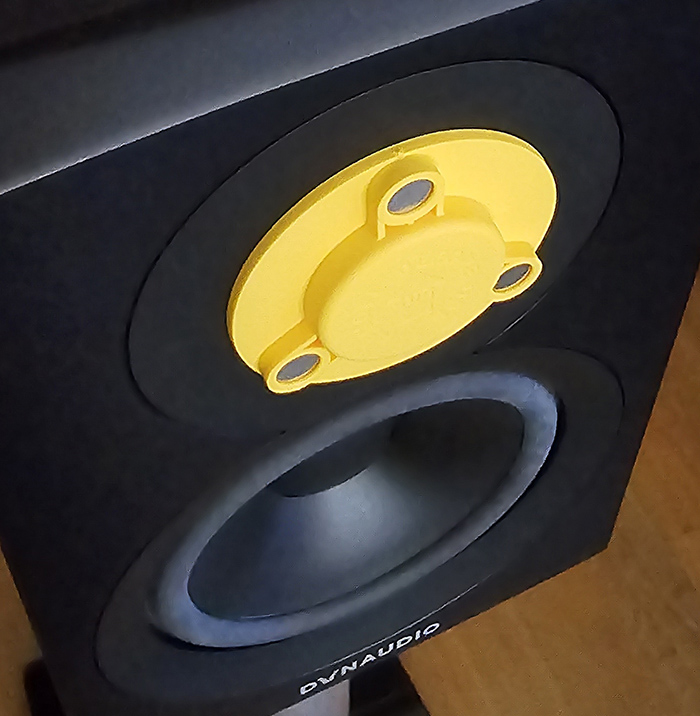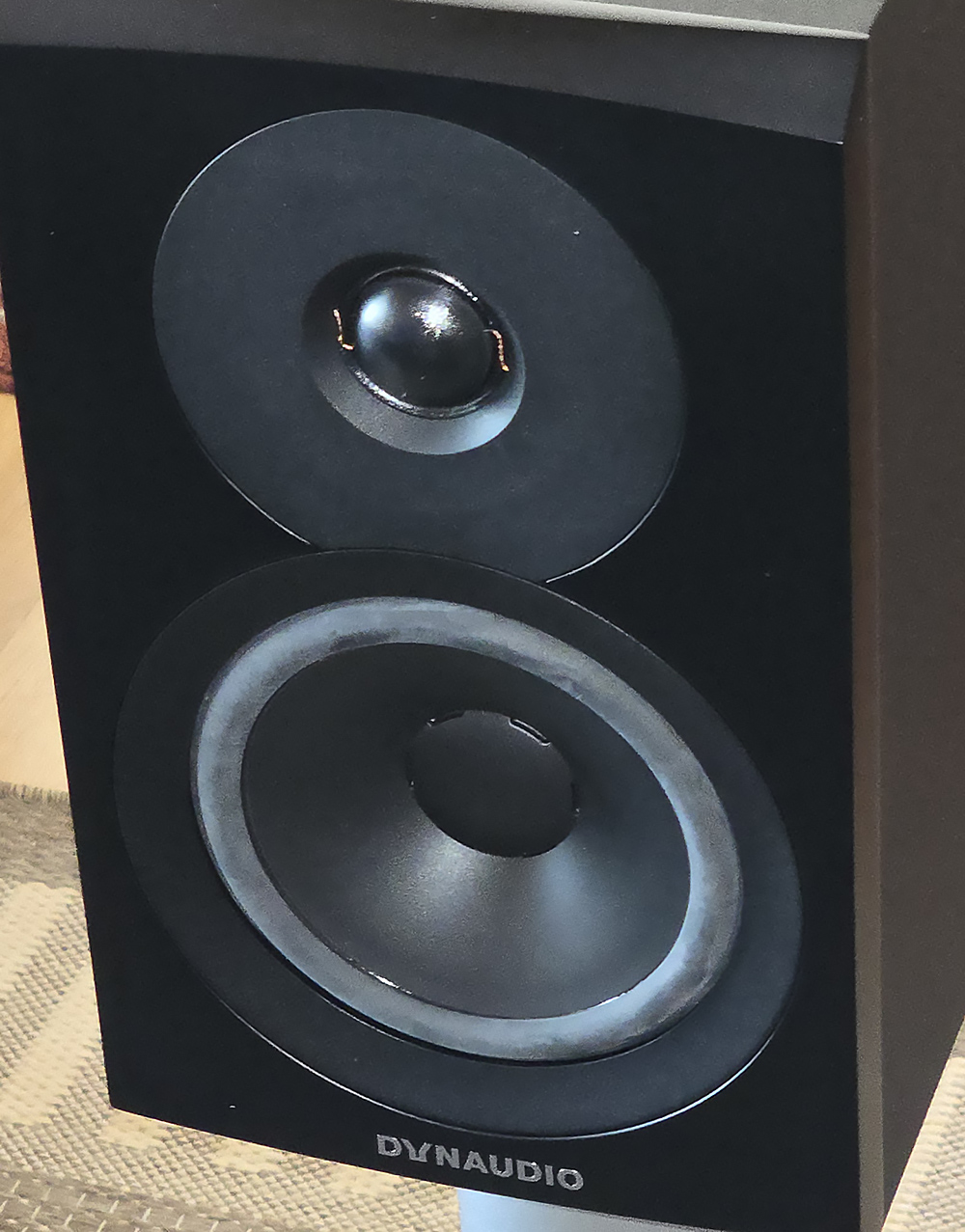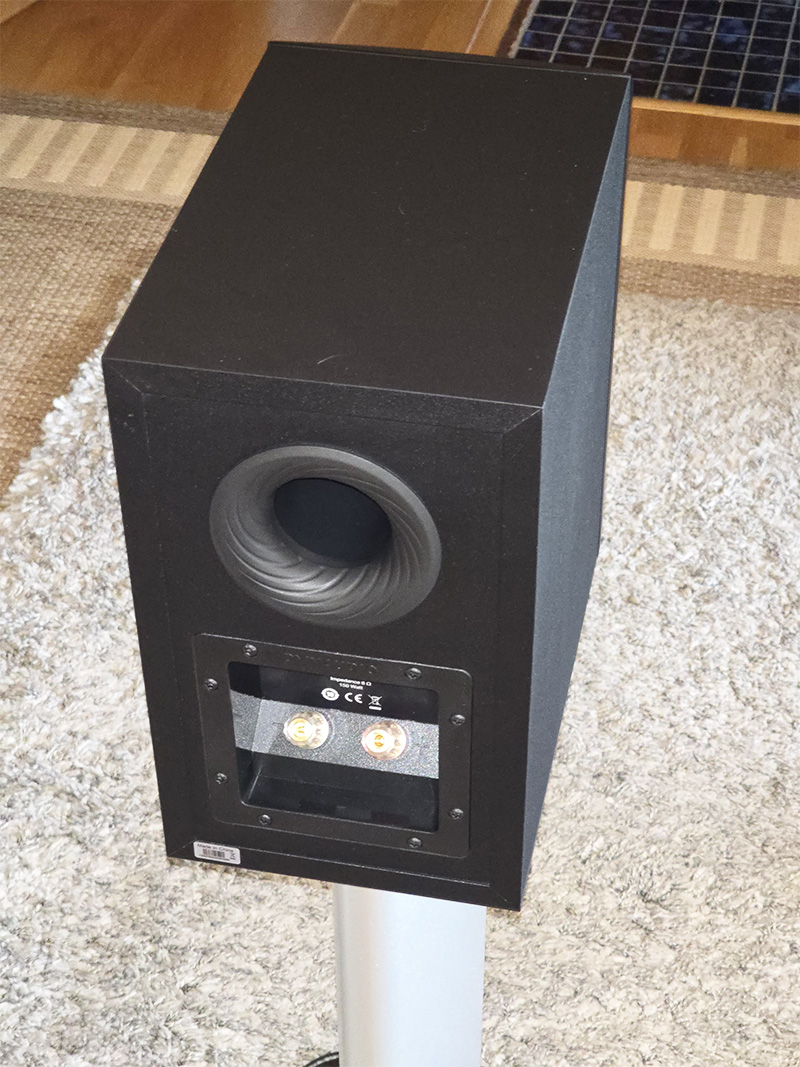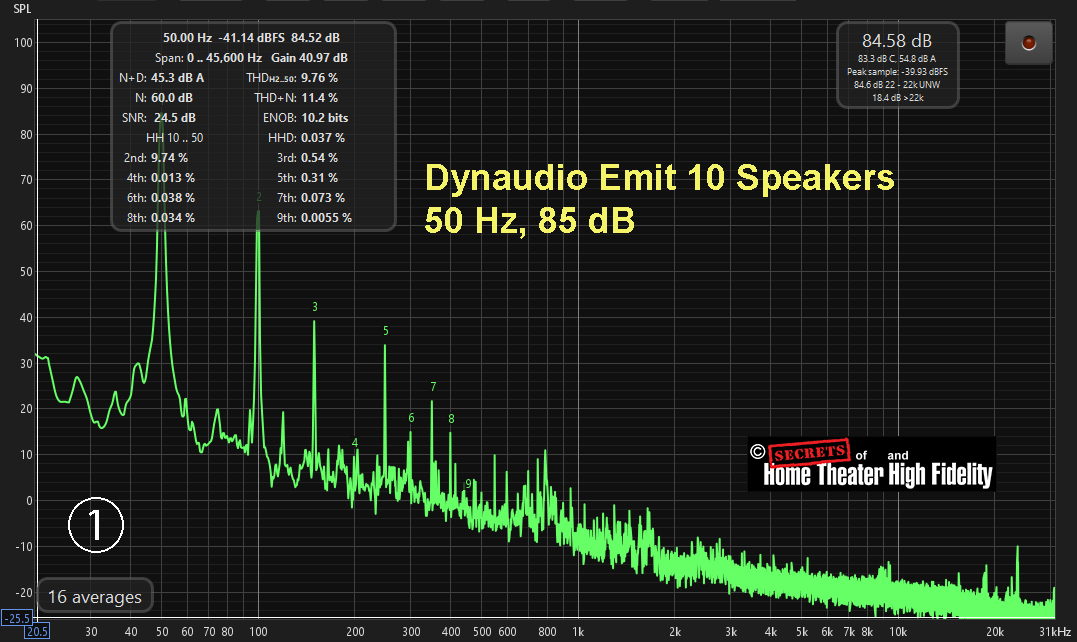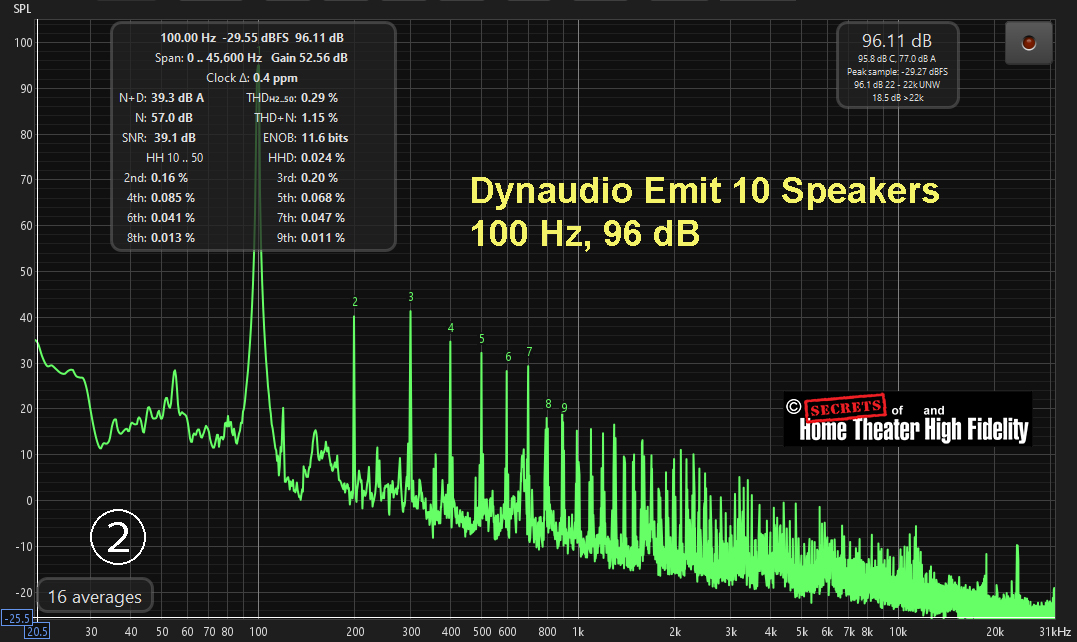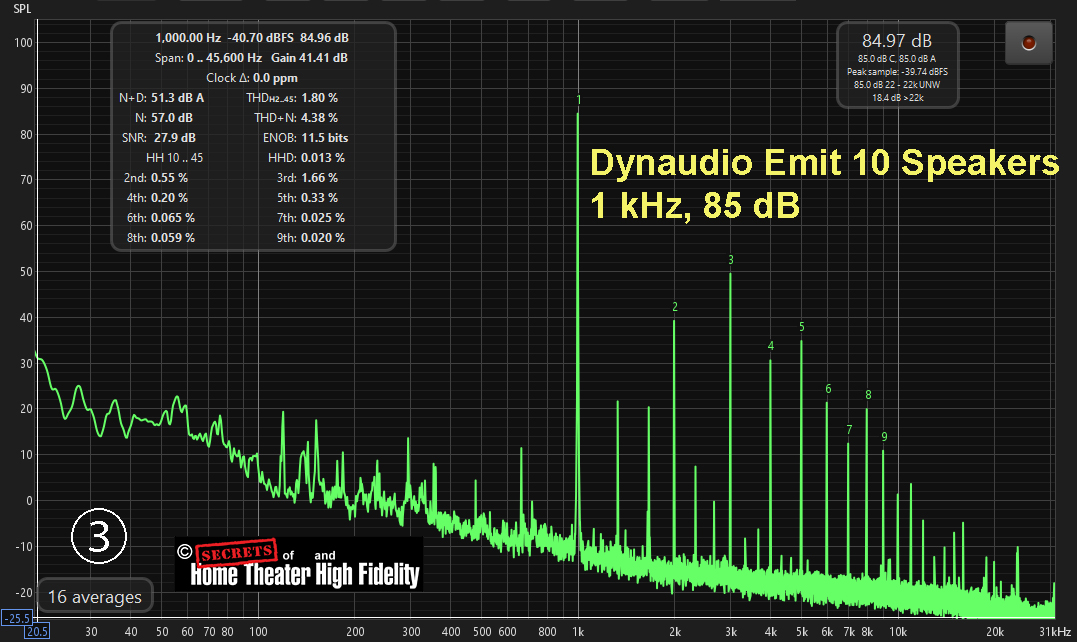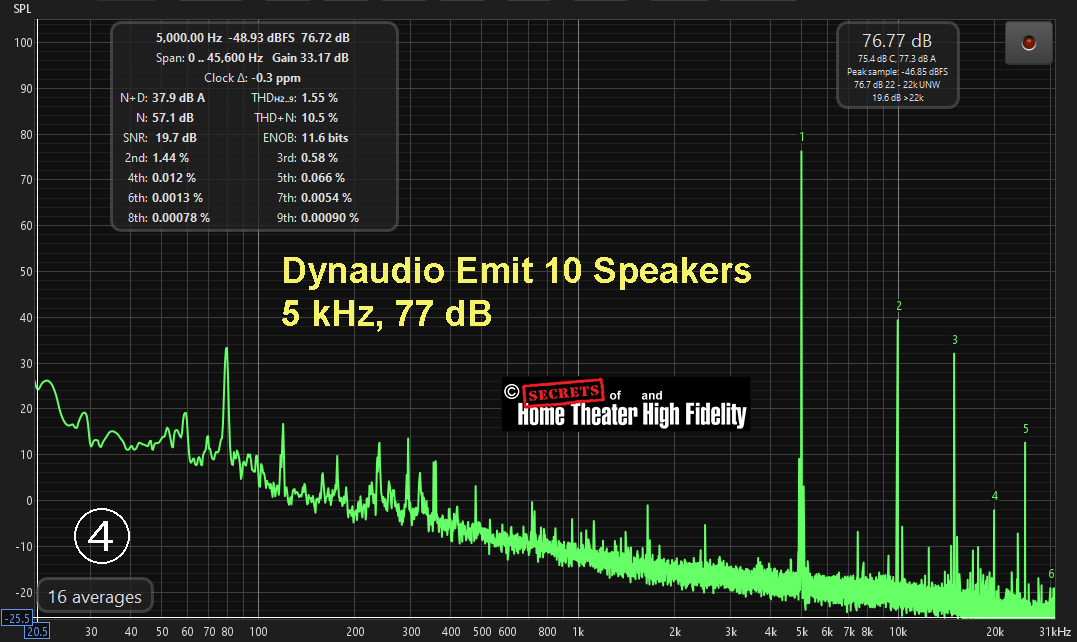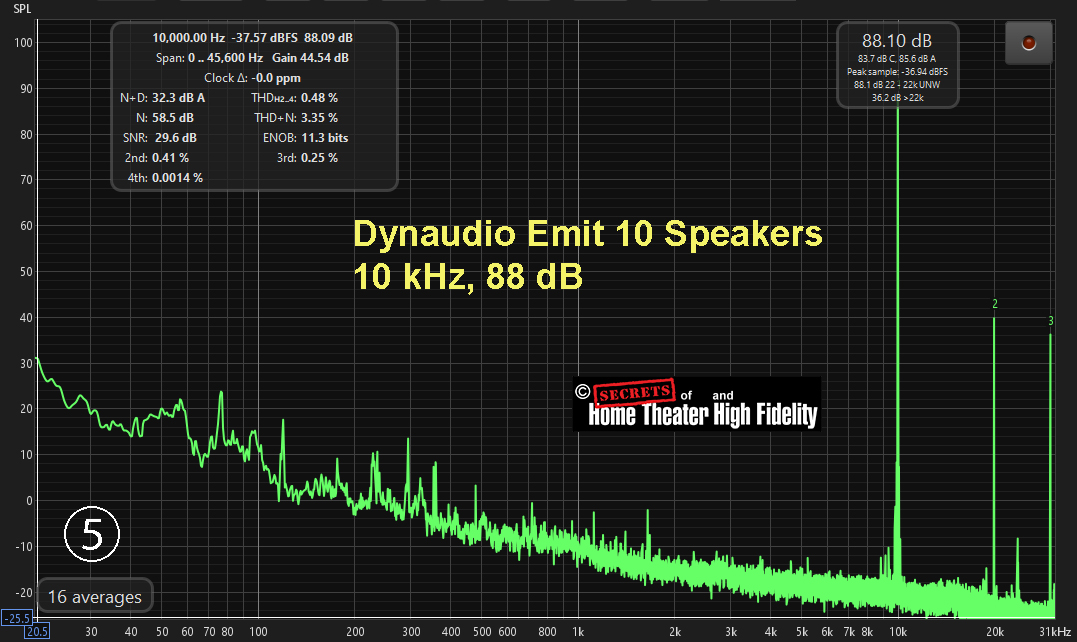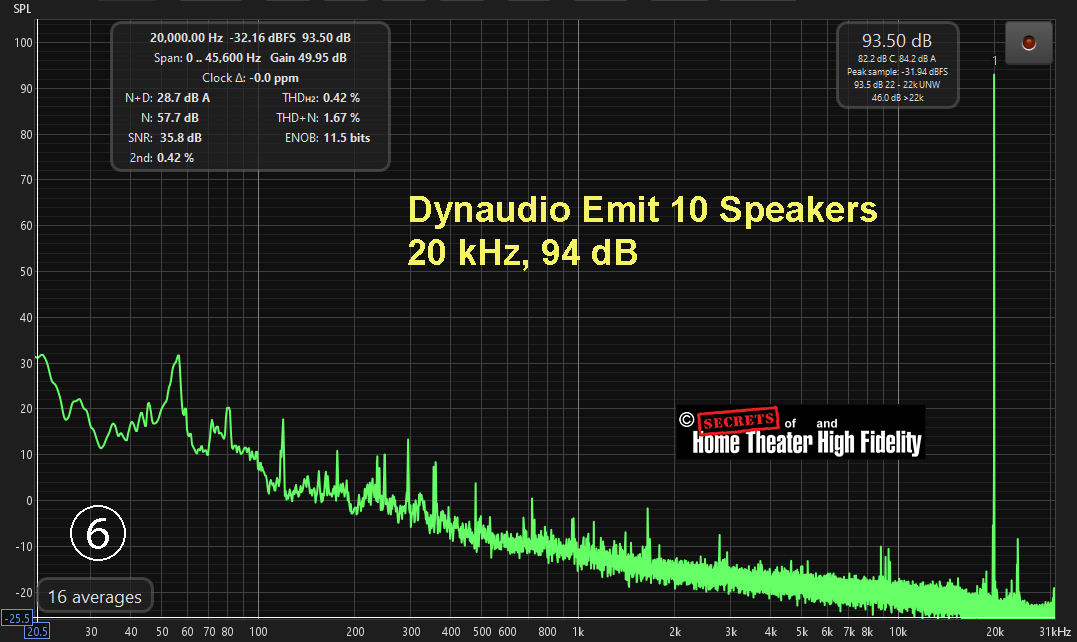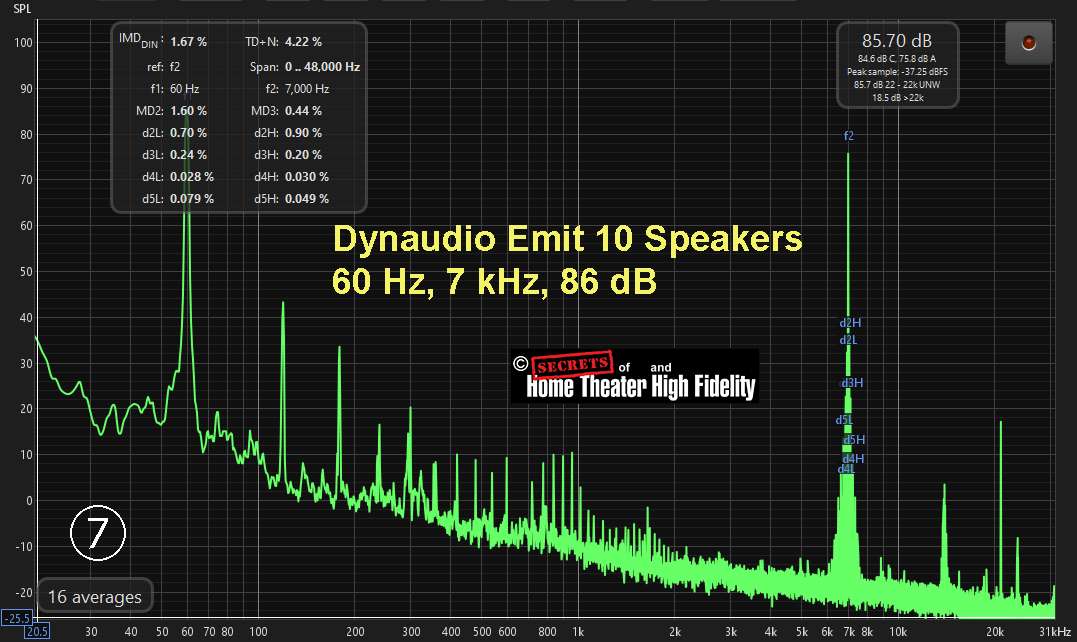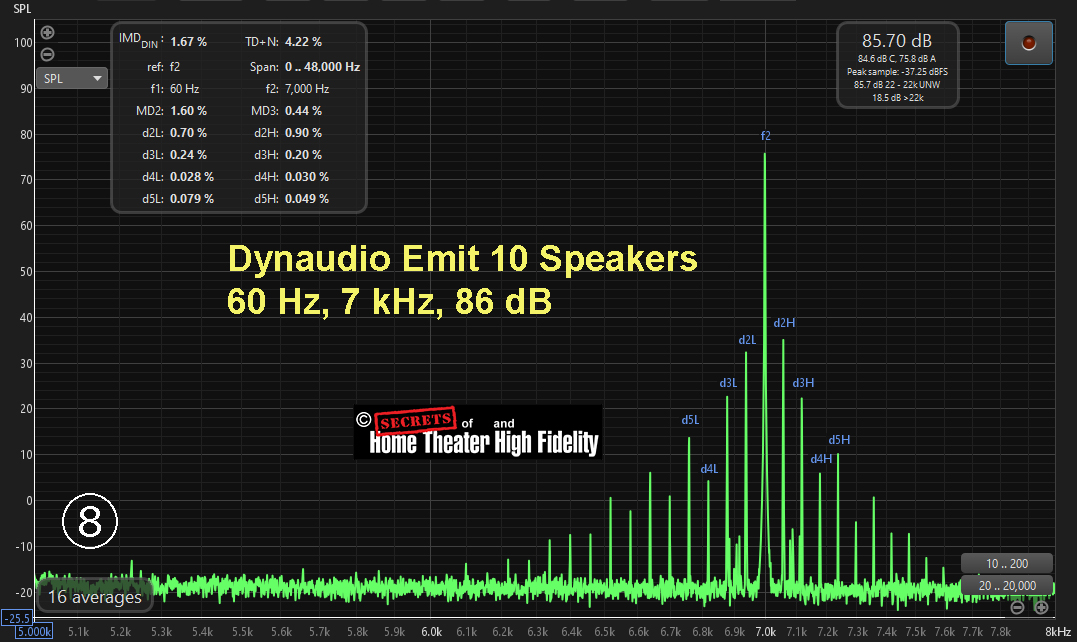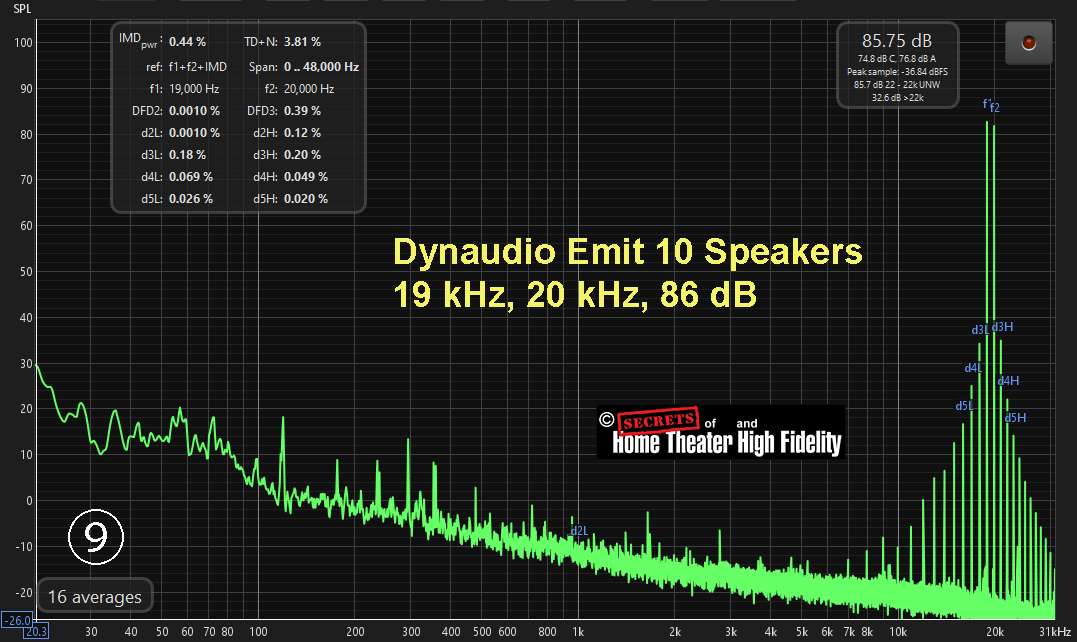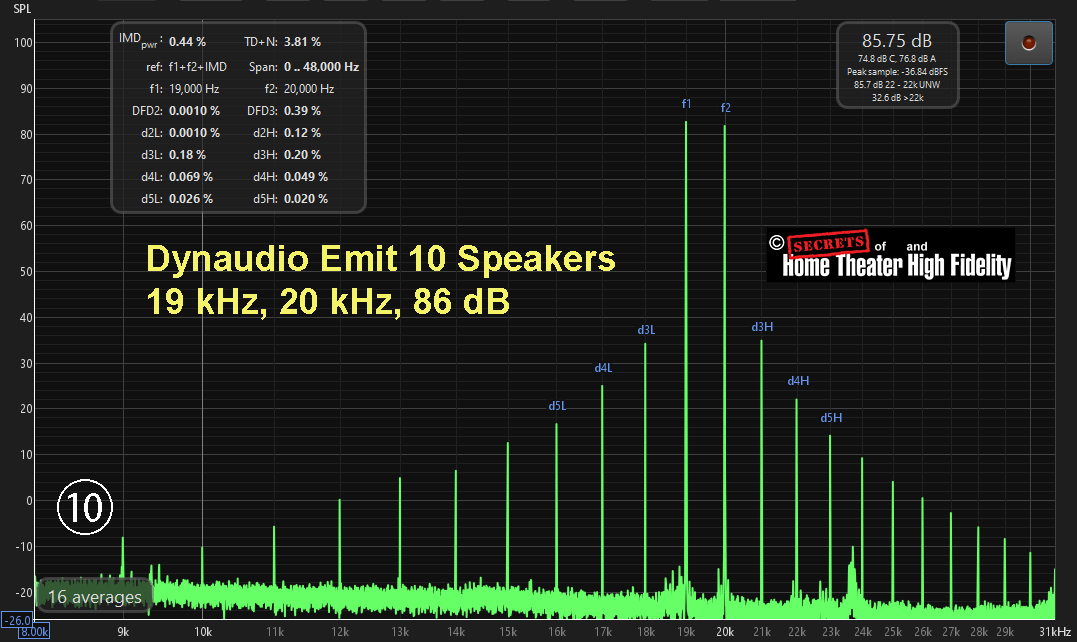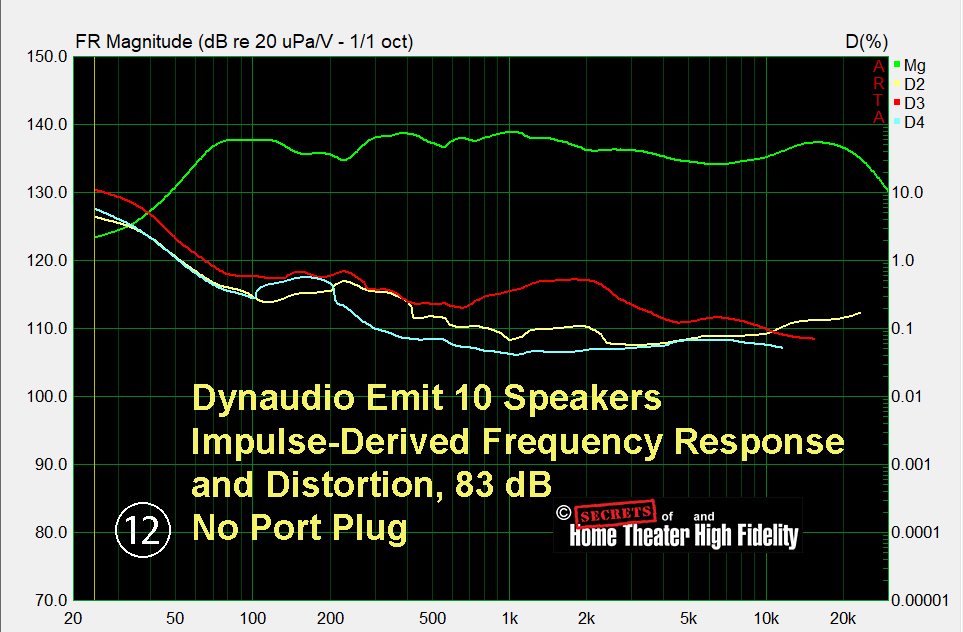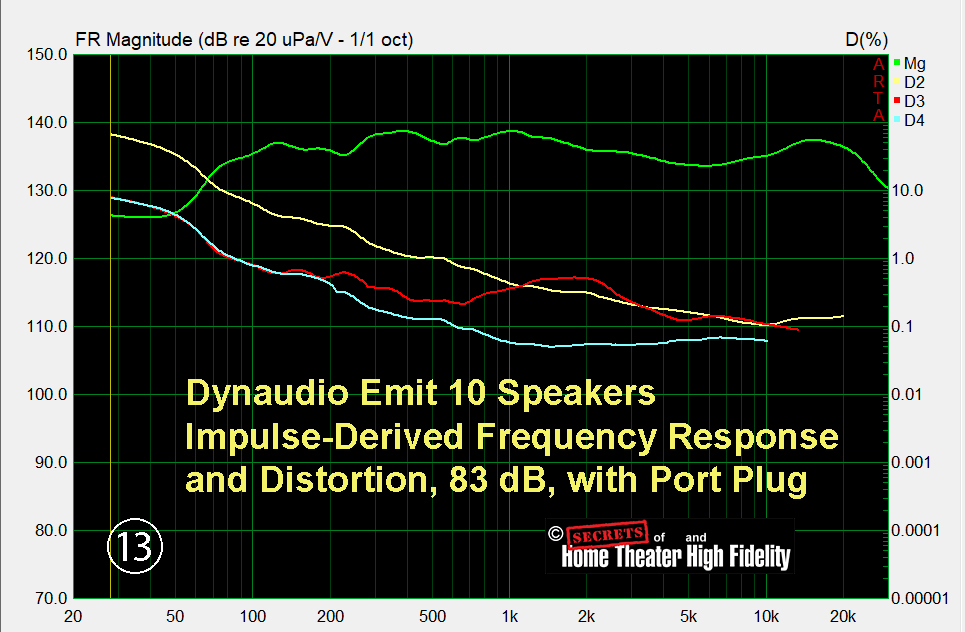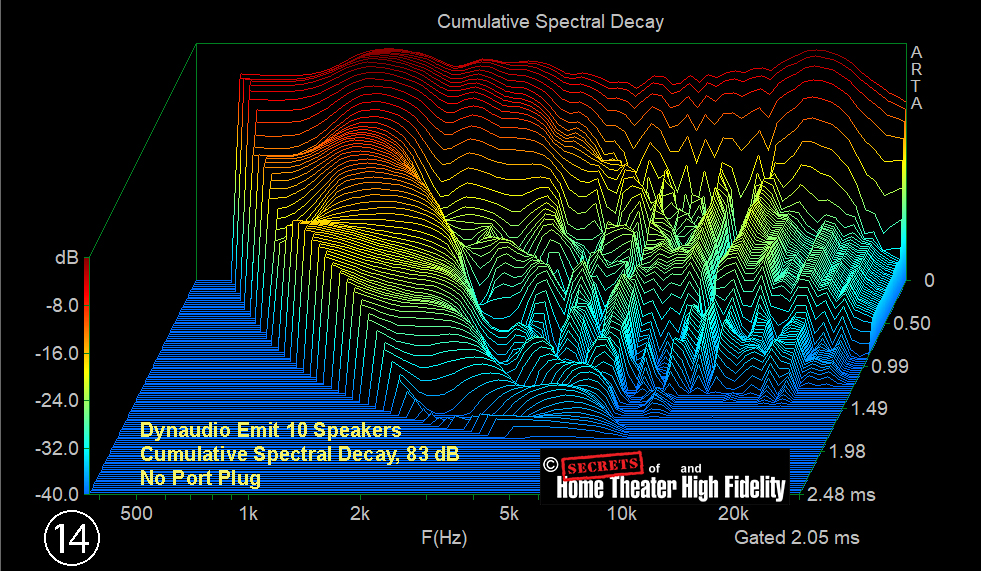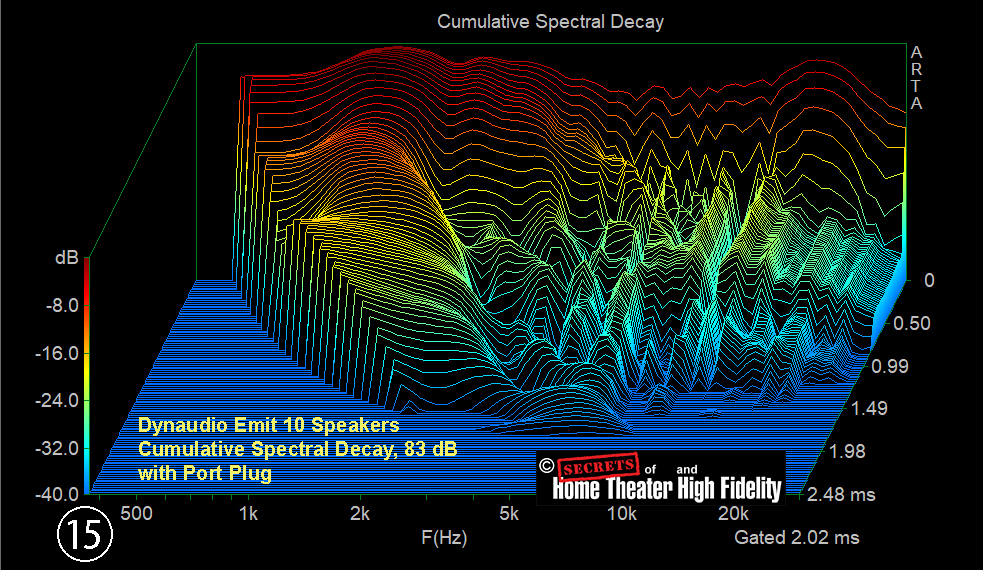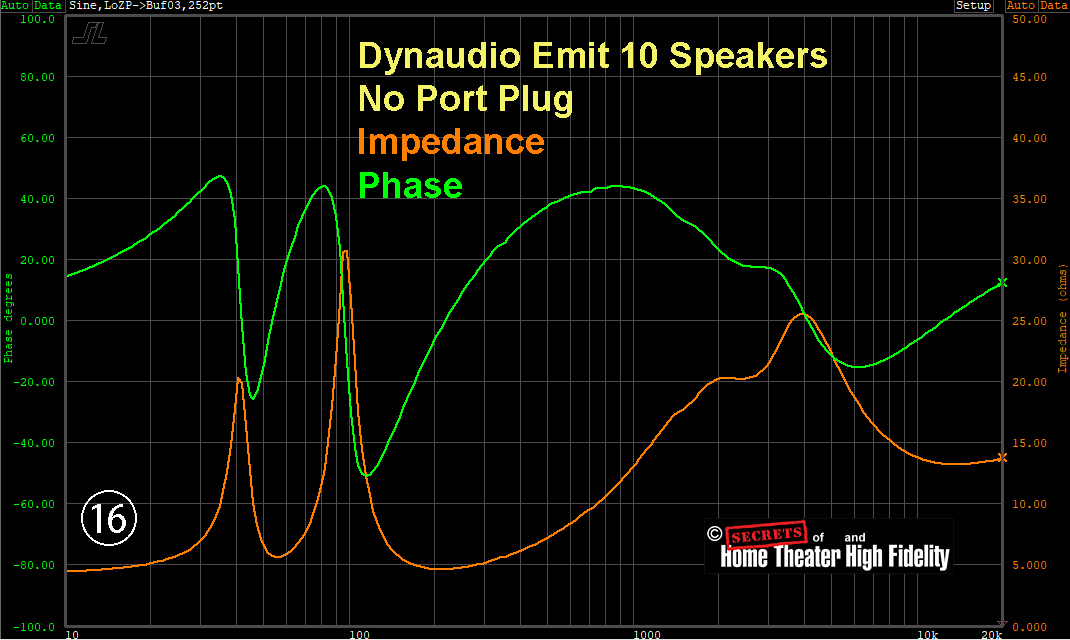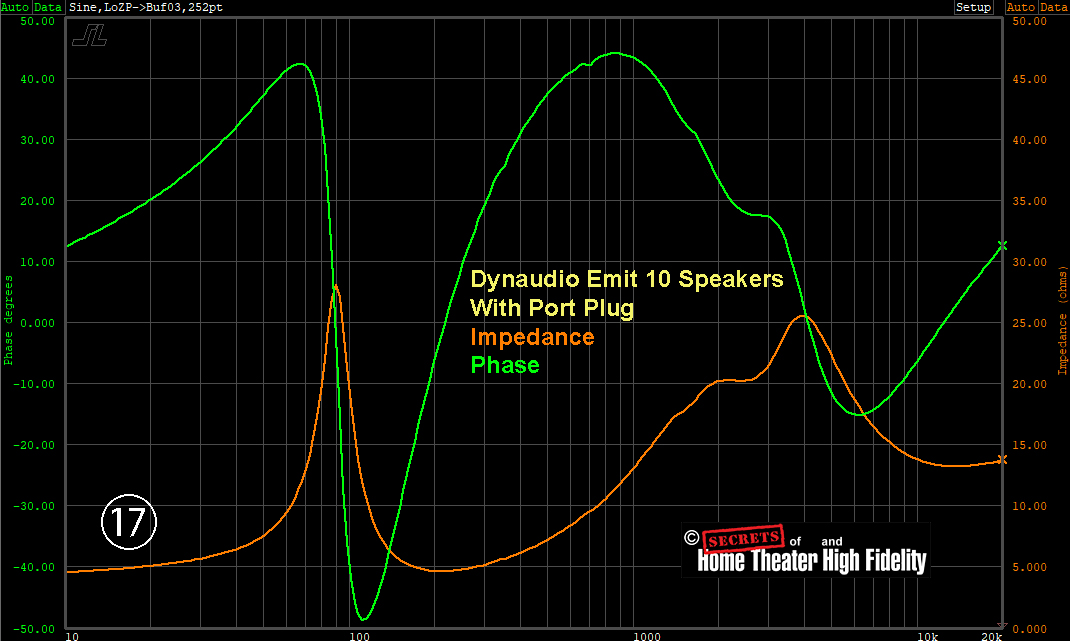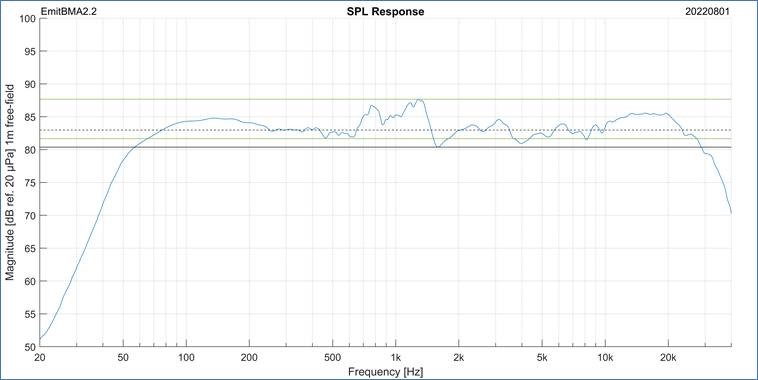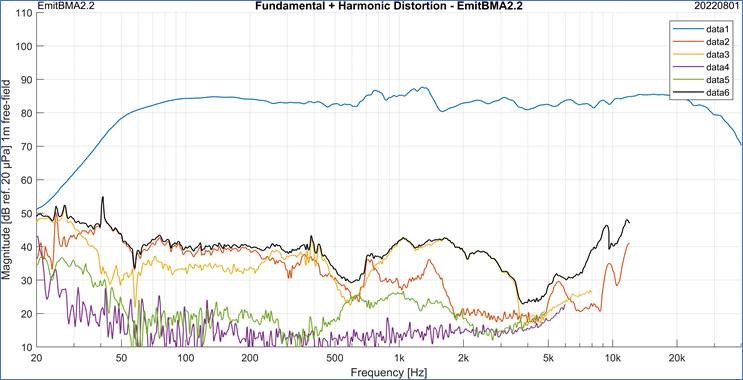The enclosure surface is covered with plain flat (non-shiny) black veneer, so the money went into the sound (a really nice idea). They would make excellent speakers for any of the surround channels. For up front, they need a subwoofer.
Dynaudio Emit 10 Bookshelf (Stand-mounted) Speakers Highlights
- Good sound for such a compact design
- Good sound for such an inexpensive speaker
- Fabric-dome tweeter for smooth sibilants and non-edgy sound
Dynaudio, a Danish loudspeaker manufacturer, was founded in 1977 by Wilfried Ehrenholz. Dynaudio’s speakers, including their drivers, are developed and handmade in-house, but in the beginning, they used commercial drivers with their own enclosures at their labs in Denmark. The company is known for building its own drivers, including a magnesium silicate polymer (MSP) that gives its speakers a unique sound. Dynaudio also has a subsidiary called Dynaudio Acoustics that focuses on professional audio, including recording studio loudspeaker equipment.
They sent me a member of their Emit series, the Emit 10. It is a bookshelf (stand-mounted) speaker, which retails for $799/pair USD. They come in flat black (the ones I got), walnut, and white. The finishes are simple and inexpensive, but completely adequate. The money was put into the drivers, which is something I like very much in an affordable speaker.
Build Category:
Bookshelf (Stand-mounted)
Driver Category:
2-way
Ported:
Yes
Tweeter:
1.1″ Fabric Dome
Woofer:
5.5″ MSP (hybrid formulation of polyurethane and silicone)
Frequency response:
Not specified
Sensitivity:
86 dB @ 2.83V/1m
Nominal Impedance:
6 Ohms
Crossover Frequency:
2-way at 3,700 Hz
Crossover Topology:
1st-order Tweeter, 2nd-order Woofer
Power Handling:
150 Watts
Dimensions:
11-3/8″ H x 10-6/8″ W x 10-6/8i″ D
Weight:
14.1 Pounds
MSRP:
$799/pair USD
Website:
Company:
SECRETS Tags:
DynAudio, Bookshelf Speakers, Emit 10, Speakers, Stand mounted speakers, Stand-mounted
Secrets Sponsor
The Dynaudio Emit 10’s are relatively small, but that is their purpose, to easily be placed just about anywhere. Although they are classified as bookshelf speakers, the port is on the rear, so if placed on a typical bookshelf, the port would be blocked by the wall behind them. However, they could be mounted on the ceiling for use in the “Height” channels for Dolby Atmos surround sound, as long as they are hung from the ceiling and not mounted flat against the ceiling. If the included port plugs are used, the speakers could be mounted flat against the wall or ceiling. I listened to them placed on stands.
The tweeter is a fabric dome, which is something I like because it reduces the sharp edginess that is found in some recordings, especially electronic music. When the speakers are unpacked, there is a magnetically attached yellow tweeter cover. I have never seen a driver protected this way. Nice idea!
The woofer is a conventional design, with MSP formulation (polyurethane and silicone), and is small at 5.5″. Again, though, this is supposed to be a compact speaker. It performs pretty well for its size as you will see.
The rear panel has a port and one pair of binding posts. The port has a spiral surface that spins the air moving in and out. Two foam port plugs come with the speakers. This reduces the bass output so you can use a subwoofer, crossed over at about 70 Hz. That is what I would recommend in any case, as a 5.5″ woofer can only do so much. By reducing the woofer output, this will also alter distortion in the remaining low frequencies that the speaker has to reproduce.
I listened to the Dynaudio Emit 10 speakers using Qobuz high res streaming through a laboratory-grade soundcard balanced output into Parasound JC 1+ monoblock power amplifiers. The speakers were placed on stands 10 feet apart, toed in.
Below are the standard albums that I use for reviews. I don’t use all of them for every review, but I include some for each of the factors that I want to listen for, such as violin smoothness, sibilance, male and female voices, bass punch, etc. I also listen to new music releases for some variety, but the main opinions are based on the standard albums because I know what they are supposed to sound like.
Here is my summary of the Dynaudio Emit 10 speakers’ sound quality:
1 – Plays loud without much audible distortion – Medium volume is best
2 – Violins sound clean and natural – Yes, smooth edge transients
3 – Sweet high-end rather than edgy, irritating sound – Yes
4 – Human voices natural – Yes
5 – Detailed – Yes, but fabric dome tweeter is not as detailed as metal dome tweeters
6 – Congestion at high volume – Yes, but not so much at medium volume
7 – Midrange prevalence – No
8 – Sibilance – Medium
9 – Powerful, punchy bass – Yes, too much actually; better to use the port plug
10 – Bass boominess – Yes, but reduced by the use of the port plug
Bench tests were conducted using a calibrated microphone 1 meter from a midpoint between the tweeter and woofer, on-axis. The microphone is calibrated to 30 kHz.
At 50 Hz, THD is almost 10% at 85 dB SPL, but at least it is 2nd-ordered. The speaker should be crossed over to a subwoofer at 70 Hz for proper use. Note that for speakers, I use THD as the measurement rather than THD+N because background noise in the room contributes to the noise value.
At 100 Hz, which is well within the small woofer’s capability, distortion was only 0.29%, but the output was very high at 96 dB SPL. A good reason to use the included port plug.
1 kHz is where I set the volume level, and then I conduct all the other distortion tests leaving the volume unchanged. Here, at 85 dB SPL, the 1 kHz sine wave delivered 1.8% THD.
At 5 kHz (Figure 4 below), distortion was 1.55% at 77 dB SPL. It is primarily 2nd-ordered.
At 10 kHz, output was 88 dB SPL, with 0.48% distortion, primarily 2nd-ordered.
And, at 20 kHz, the output was 94 dB SPL, and the distortion was 0.47%.
For the standard IMD rest, 60 Hz and 7 kHz sine waves are used. Here, at 86 dB SPL, IMD was 1.67%.
Figure 8 below shows the same data as in Figure 7 above but with the X-axis enlarged to show the individual peaks. There are a lot of them, but keep in mind that the 60 Hz sine wave is coming from the woofer, and the 7 kHz sine wave is coming from the tweeter. The IMD is the interaction of the two frequencies in the air between the speaker and the microphone 1 meter away, so the test shows how the driver arrangement deals with the production of intermodulation.
Figure 9 is another intermodulation test using 19 kHz and 20 kHz sine waves. In this case, both test signals are coming from the tweeter. Here, at 86 dB SPL, there are a lot of side peaks.
Figure 10 below shows the same peaks in Figure 9 with the X-axis enlarged.
A 1/10th decade test result is shown below. It is a very stressful test, and its purpose is to show where distortion is distributed throughout the audible spectrum. You can see that it starts to get higher at about 800 Hz and above.
Using an Impulse Response, the Frequency Response and Harmonic Distortion at an average 83 dB SPL for all the frequencies can be derived, as shown below in Figure 12, with no port plug in place. Distortion is about 1% at mid and low frequencies and is primarily 3rd-ordered.
With the port plug in place, Figure 13 below, notice that the bass below about 200 Hz is attenuated. Notice also that the distortion from the low frequencies up to about 1 kHz, and some at about 5 kHz, is now primarily 2nd-ordered. It is a bit higher in total due to the attenuation of the SPL at the low frequencies, which makes distortion a larger proportion of the total volume. So, use these speakers with the port plug for the best sound (in my opinion).
The Cumulative Spectral Decay (CSD) at 83 dB SPL for the Emit 10 is shown below, derived from the Impulse Response, without the port plug in place. There are significant enclosure and driver resonances which are gone by 2 ms (milliseconds).
With the port plug in place, Figure 15 below, there is a bit of reduction in low-frequency enclosure resonance at around 4 kHz. This is another reason to use the port plug.
Figure 16 shows the Impedance/Phase plot for the Dynaudio Emit 10 speakers without the port plug. The Impedance maximum is 31 Ohms at 90 Hz, and the minimum is 4.5 Ohms at 200 Hz. The Phase angle max is +46° at 36 Hz, and the minimum is at -50° at 120 Hz.
With the port plug in place, the curves are changed quite a bit. The Impedance max is now 27.5 Ohms at 90 Hz but still 4.5 Ohms at 200 Hz. The Phase angle max is +44.5° at 850 Hz, and -49° at 120 Hz.
Secrets Sponsor
“Thirteen channels in one sound bar enclosure . We may have to put the flat panel TV a little higher on the wall.”
The Dynaudio Emit 10 bookshelf (stand-mounted) speakers are a good value at $799 the pair. The fabric dome tweeter keeps the sound smooth, without edginess.
- Performs better than their price
- Port plugs included which improve the performance
- The money went into the drivers
- Small enough to work well as surround sound speakers
- Nothing at this price point
Here are our distortion (THD+N) measurements:
Further Notes by JJ: The bass is too intense for a 5.5″ woofer, but this can easily be remedied by using a crossover at 70 Hz to a subwoofer in a home theater setting and using the port plug. Also, by using the port plug, the speakers can be placed against a wall for side or rear surround use. They are too small for use as the front left/right speakers in a stereo or home theater because the sound from those channels is usually the loudest. But, for use in a video game setup for computer speakers, they would be terrific. Here again, use the port plug and add a subwoofer.


